Once again we leave no stone unturned as we comprehensively review the subject of hydration, evaluate the implications for sporting performance and consider how this all applies to you.
In this article, we will discuss:
- The role that water and electrolytes play in the normal and correct functioning of our bodies
- A look into the research on hydration and human performance
- Insights into to how to prevent and offset dehydration pre, during and post exercise
- Explain how one size doesn’t fit all and how an adaptive strategy to hydration and fueling is required to produce the best possible performances.
The Role Of Water
Water plays a whole host of important roles within the human body from regulating physical function through to supporting mental performance. If water availability is reduced, dehydration will occur and this will in turn impact on our overall bodily function.
Blood Plasma & Cardiovascular Function: Blood plasma is the ‘watery’ component of the blood, making up around 55-65% of the total blood volume within the body. As we become dehydrated, the water in our blood plasma is reduced and the blood becomes more viscous (thicker). This has a direct impact on the efficiency of the heart to distribute blood to the sites of the body which need it the most (i.e. the working muscles during exercise). When plasma volume is reduced, the total volume of blood pumped from the heart with every beat is also reduced. So, if we are asking the body to maintain a set pace or power, it stands to reason that the heart must beat more times per minute to deliver the same amount of blood – blood which delivers oxygen, fuel and hydration to the muscles and organs of the body. Not only do we experience this physical change as we become dehydrated, but the increase in heart rate also makes us feel like the exercise intensity is much harder, increasing our rating of perceived exertion (RPE).
Thermoregulation: When we get hot, whether this be due to hot weather conditions, bouts of strenuous exercise or a combination of the two, we start to sweat. It may surprise you that when it comes to converting energy from the food we eat into bodily movements, the human body is rather inefficient. Around 75% of the energy produced allowing us to move is lost to heat production. The body has evolved to function at a temperature of around 37°C (98.6F), with only a very small deviation around this (~36-40°C) before major and potentially life-threatening symptoms start to occur. As core temperature starts to rise, we have evolved to dissipate heat away from the body through sweating. As we sweat, the moisture on the skin’s surface removes the heat from the body as it evaporates into the atmosphere, helping to maintain our body temperature at the 37°C set point. Water is the primary ingredient used to form sweat, so if water availability is reduced because of dehydration, the water required to allow us to sweat is also reduced and our thermoregulatory capacity is compromised. In other words we overheat, which means we need to slow down. Sweat can be lost at huge rates, depending on the environment – in some extreme cases, up to 4 litres an hour!

Mental Performance: The ability for our brain to process information can have an impact on sports performance, especially in sports that require rapid decision making, concentration or visual tracking (the ability to follow moving objects or rapidly changing fields of view). Our hydration status can also impact mood, short term memory and motivation – factors which you would hope to be firing on all cylinders come the day of a key event. When it comes to monitoring mental performance, it may be a little more difficult to determine if it is your hydration status that’s causing the disruptions, because in almost all day-to-day situations, our ratings of mood are based upon feelings rather than hard numerical data such as heart rate for example. That said, changes in these mental functions should still be monitored and related back to your daily fluid intake as may just find that your hydration status is the underlying factor causing these symptoms.
Digestion & Intestinal Absorption: Water availability is critical to digestion and absorption. After ingestion, fats, carbohydrates and protein leave the stomach and enter the small intestine, the place where nutrients are absorbed into the blood – an area specifically named the ‘jejunum.’ It’s within the jejunum (the middle part of the small intestine) where most of the fats, carbohydrates and proteins are absorbed into the blood to be used as fuel or stored as potential energy.
It’s here that the terms osmolality and tonicity start to become important. Osmolality is the technical term used to describe the number of solutes within a solution and is measured in osmols per kilogram of solution. In the case of an energy drink (like TORQ Energy Drink) the solute is the carbohydrate and electrolytes that have been dissolved within the water. The water would be considered the solvent. The more of these solutes that are dissolved into the water (so the more scoops of you add to your drinks bottle) the higher the osmolality of the drink will be. When we refer to the osmolality of a drink relative to the blood osmolality and the membrane in the small intestine that it passes through, we use the term ‘tonicity’. This is where the terms Hypotonic, Isotonic and Hypertonic originate from. Hypotonic means less concentrated than the blood, Isotonic means the same concentration as the blood and Hypertonic means more concentrated than the blood.
The body regulates the osmolality of blood to around 280-290mmol per kg by passing water across membranes via a process known as osmosis, demonstrated in the animation below. Understanding this process is vital to recognising the role that water plays in the absorption of fluids and foods.
Any solution (drink) that is either less concentrated (hypotonic) or of equal concentration (isotonic) to the blood will be absorbed seamlessly via osmosis across the intestinal membrane. On the other hand, for a Hypertonic drink (or energy gel, energy bar or even a meal) to be absorbed, that has an osmolality higher than that of the blood, the body must first draw fluid out of the blood into the small intestine to dilute the rich hypertonic solution and create a pressure gradient for absorption. This sounds pretty severe, but our bodies have evolved to be able to handle this regular task very easily and efficiently. The process does however require an adequate state of hydration so that sufficient water is available. If we find ourselves in a dehydrated state and there isn’t enough water in the blood to facilitate the process, we will soon develop gastro-intestinal distress such as bloating or intestinal cramps as the absorption process comes up against the buffers. This lesson is critical to understanding how your state of hydration pays a role in your fueling and hydration strategy during exercise. We talk about this in greater detail in our article Isotonic, Hypotonic or Hypertonic so please take the time to give it a read if you’re interested in this subject. The bottom line is that it is impossible to fuel correctly for endurance sports without respecting the role that hydration plays.
The Role Of Electrolytes
First of all, contrary to popular belief, pure water is a particularly poor hydrator. Plain water causes bloating due to poor absorption rates and also suppresses the thirst reflex, leading to decreased desire to drink. It also stimulates urine output and is therefore inefficiently retained within the body where it’s needed. Drinking water alone can not only lead to bloating and a sensation of stomach fullness, but over-drinking pure water can have potentially life-threatening consequences. When water is over-consumed, a huge volume of water reaches the blood and dilutes its contents, resulting in the rapid development of a condition known as Hyponatraemia. When this occurs, in an attempt to rebalance the blood concentrations, water (through osmosis) will move from the blood to the cells. In most instances, this will result in symptoms such and headaches and nausea, but in severe cases, the sudden saturation of water within the cells could lead them to swell (especially within the brain) and critical medical conditions such as seizures or even comas could develop. For a whole host of reasons including your safety, it is therefore vital that electrolytes are present within your hydration drink.
Both TORQ Energy Drink and TORQ Hydration Drink contain Sodium, Chloride, Magnesium, Potassium and Calcium, which are 5 electrolytes typically lost through perspiration. Electrolytes are minerals, which when dissolved in water, have the capacity to conduct an electrical current. These minerals also maintain homeostasis (balance) within the body, allowing it to retain water and preserve muscle function. Here’s a summary of what these electrolytes do:
Sodium: Sodium is possibly the most important electrolyte found within a hydration drink. Sodium has a direct impact on hydration, but also optimal muscle function. The addition of sodium within a hydration drink stimulates thirst and makes the drink more palatable. Combined, these two factors will have a profound impact on our desire to drink pre, during and post exercise, making the necessity to drink a whole lot more enjoyable. Sodium also has one other trick up its sleeve – it is one of the most osmotically active electrolytes, allowing us to retain water within our cells and blood, which is obviously very good for the hydration status of the body. Sodium also plays an important role with the delivery of the action-messages sent from our brain to our muscle, just microseconds before we initiate a muscle contraction. So it’s easy to see how a reduction in sodium can impact muscle function and lead to sensations such as cramps.
Calcium: Typically known for the development of strong bone structure, calcium once again plays an important role in muscle contraction. Once an action message has arrived at the desired muscle, this electronic signal stimulates a number of biochemical reactions in the muscle cell. This releases calcium into the muscle fiber and allows the contraction to commence. If calcium is lost at high rates as we sweat, can we really expect the muscle to perform?
Potassium: The role of potassium is very similar to that of sodium. Potassium regulates the optimal fluid balance inside our cells and has an impact on the nerve impulse sent from the brain to the muscle. Therefore, if potassium availability is depleted, we are likely to see alterations in muscle function and increased likelihood of developing cramps.
Magnesium: Magnesium is less osmotically active than sodium, however it is an essential mineral that is flushed out in our sweat and therefore must be replaced. Magnesium supports energy production, muscle function and also has an impact on protein production, which is crucial to the post-exercise recovery and adaptation process.
Chloride: Chloride on the other hand has less of a direct impact on overall fluid balance but does have an impact on nerve impulses much like sodium, calcium and potassium. Because it is lost in sweat, chloride is added to hydration drinks to counter the depletion that would otherwise take place during exercise.
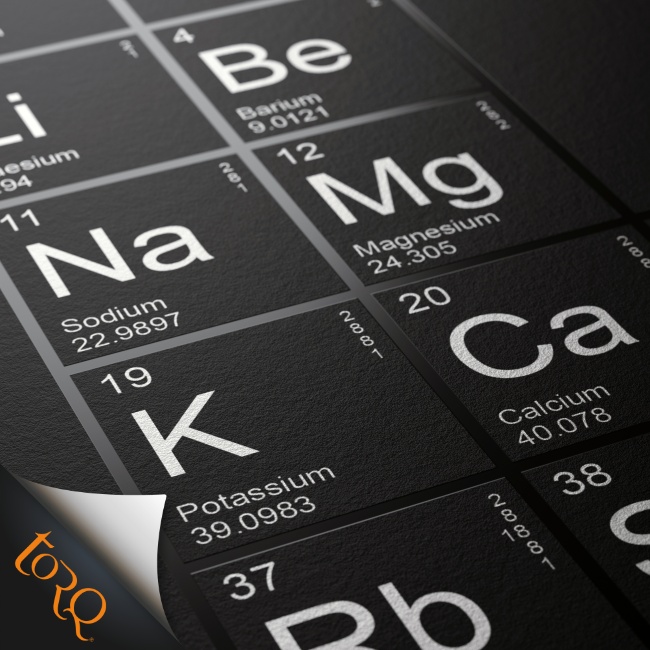
Does Carbohydrate Aid Hydration?
When we ingest carbohydrate, whether this be a via a TORQ product or any other form, the carbohydrate must be transported from the small intestine to the blood. Unlike water, carbohydrate doesn’t have the ability to pass through the intestinal wall via passive transport (osmosis). Instead, carbohydrate must use an intestinal transporter. There are different transporters for different types of carbohydrate, but the important one from a hydration perspective is SGLT-1 (Sodium, glucose transporter 1). As the name suggests, for the transporter to function we need both glucose (carbohydrate) and sodium present – in fact, to be precise, a single glucose molecule and two sodium molecules are needed. The interesting part is that as SGLT-1 draws a molecule of glucose and 2 molecules of sodium across the intestinal wall, it drives with it a whopping 260 molecules of water. This process has been named ‘Facilitated Transport’ by Sports Scientists. As water is required to support the delivery of carbohydrate, the water delivered to the blood helps to hydrate the tissues of the body. It’s also important to remember that this facilitated delivery of water is in addition to the water being delivered via passive transport. These two mechanisms work simultaneously to optimize the process of hydration and this is the science upon which our Energy and Hydration drinks are built.
The animation below demonstrates the facilitated transport process working in conjunction with the passive transport mechanism we discussed previously.
So, the science of hydration is all about finding the right balance between the passive and facilitated transport processes. In order to produce a drink to optimise the hydration process ahead of anything else, the tonicity of the drink must be as low as possible to encourage the passive hydration process. At the same time, it must contain enough carbohydrate and sodium to promote the highly effective facilitated transport process. This is why we developed TORQ Hydration Drink. It has a very light hypotonic profile to support the passive transport process, whilst at the same time providing enough carbohydrate and sodium to drive the facilitated transport process. TORQ Energy Drink has an Isotonic profile, which makes it less effective from a passive transport perspective, but equally as effective when it comes to facilitated transport. Both have great hydration credentials, but TORQ Hydration Drink does out-perform TORQ Energy Drink in this department. TORQ Energy Drink on the other hand will out-perform TORQ Hydration Drink when it comes to fuelling, because it will deliver more overall carbohydrate. Both products have their place in an athlete or physically active person’s tool box.
What Does The Research Suggest?
Pre 2013, hydration studies were exceptionally hard to control and open to a vast degree of criticism, mostly due to the inability to blind participants to the dehydrated or control groups. The problem was that in order to test whether hydration had an impact on performance, one group would need to drink and the other one wouldn’t. A blind study should mean that either group wouldn’t know which group they were in, but obviously if you’re being asked to drink or not drink, it would be pretty easy to figure out! This created a placebo effect (the result of improved performance due to the belief that drinking should aid performance) and nocebo effect (the result of decreased performance due to the belief that not drinking should reduce performance) to these research designs and with that came unreliable research which lacked validity and reliability.
To overcome these research challenges Wall et al., (2013) was one of the first research groups to blind participants to the hydration intervention with use of a nasogastric tube (participants didn’t know if they were being hydrated or not) and found that when psychology could not impact the outcome, dehydration of 2-3% actually didn’t have any impact on sports performance. However, the experimental trials used within this study were hardly representative of endurance events where dehydration would ordinarily have a significant impact on performance hour on hour. The study used a 25km cycling time trial lasting in the region of 40 minutes and we wouldn’t typically expect to see an alarmingly negative impact on performance in an event that is so short. Within this study, whilst there was no difference in performance, physiological factors that regulate performance were impacted as a result of dehydration. Dehydrated participants’ core temperature increased faster than those who were hydrated. This suggests that the body’s capacity to remove heat was compromised, which over time would certainly impact performance and would perhaps have produced a different set of results should the exercising environment have been warmer.
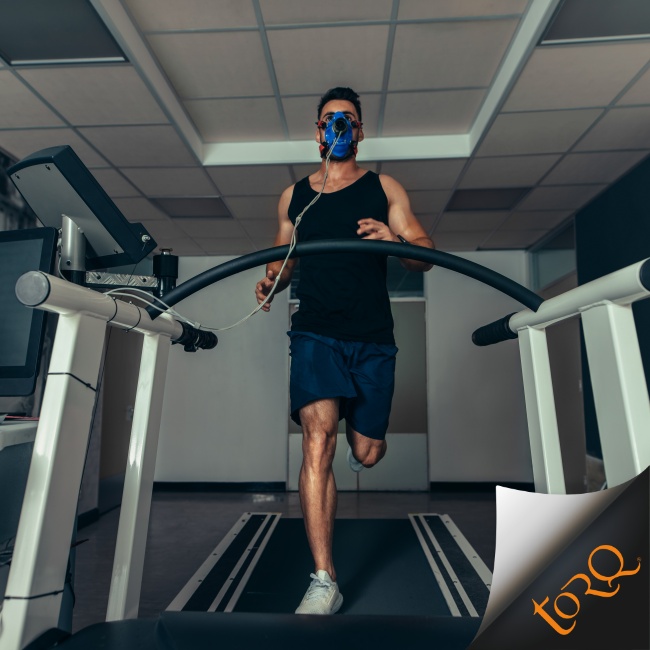
Conversely, a highly controlled and study from Funnel et al., (2019) found that both blinded and non-blinded participants showed decreases in endurance performance after 2 hours of light cycling exercise followed by a time trial lasting around 15 minutes in 30°C (much more representative of an endurance event). In this study, blinded participants had fluid administered into the stomach via a nasogastric tube at body temperature to avoid detection. The results shocked the researchers as both the blinded and non-blinded groups both saw a reduction in performance of ~10% when they were dehydrated to 3%.
These are just two examples of studies looking at hydration and exercise performance and whilst there is variability between research findings in general, studies that are well controlled show that endurance exercise performance in particular is reduced as the body becomes more dehydrated. Beyond that, even those studies which don’t represent endurance performance well due to unrealistic exercise protocols confirm that factors such as thermoregulation are impacted due to dehydration and this will inevitably impact sports performance if neglected over time. Psychology and ability to focus/concentrate are clearly impacted by dehydration and these are critical to many technical sports like tennis, squash and team sports. Arguably, the longer the exercise performance, the larger impact dehydration will have on the ability of the athlete to fuel properly too and this will clearly impact performance.
For shorter exercise sessions, especially those performed indoors, sweat rates can be particularly high and it’s important to note that whilst some limited research points towards there being no performance benefit to hydrating during exercise, this is still very much debated. Also, you should equally consider your post-exercise hydration status. Whether you consume fluids whilst exercising or afterwards, you will need to take them onboard at some point and consuming fluid during exercise is the logical choice. The evidence is clear that dehydration impacts psychological function, so if you have a desk to return to after your workout, do so in a hydrated state. If you have a physical job to return to, similar arguments apply – even if your workout wasn’t negatively impacted by short-term dehydration, the rest of your working day is likely to be through not drinking enough during exercise.
Marathon Case Study
It’s clear from the scientific evidence and physiological principles that hydration impacts physiological/psychological function. The current position statement from the American College of Sports Medicine (ACSM) suggests that fluid intakes during exercise should prevent a 2% reduction in body weight from sweat loss, so for a 75kg person this equates to a 1.5kg fluid loss. Since we have the potential to lose more than 1.5 liters of fluid per hour (equating to more than 1.5kg per hour), it’s easy to see how this 2% reduction could occur in as little as 1 hour if fluids are not consumed. Research by Baker and Jeukendrup (2011) suggests that dehydration to the tune of 5-10% reduction of bodyweight could lead to serious medical complications or even death!
The logical conclusion is therefore that dehydration must have a negative impact on physical performance and is potentially dangerous, especially with regard to endurance performances. However, there are some who have argued that there are case studies of top athletes performing at the highest level in a dehydrated state, so how do we square that circle?
Let’s look at a case study with legendary marathon runner Haile Gebrselassie. When we consider how record marathon times are produced, we know that whilst evidence suggests that hydration will play a significant role on the runner’s performance, there are other powerful factors that may give the impression that they don’t. For instance, for an elite runner like Haile Gebrselassie who broke the marathon World Record with a time of 2h:3m:59s at the Berlin marathon in 2008, run pacing would have played a huge role on his overall strategy. During the record-breaking effort, Gebrselassie ran his fastest 5km split in the last 5 km of the race, a point at which he was likely to be the most dehydrated.
This argument is used by some to suggest that his state of hydration had no impact on performance, yet in reality it’s likely that the pacing strategy would have been planned weeks or months in advance. He will have tailored his tactics towards something called a ‘negative split’, meaning the second half of his marathon would be faster than the first, which is common and has proven to produce the best marathon performances. This tactic will have been confidently planned independently of his hydration regimen, so would have occurred anyway. One thing we’re confident of is that the race would have got more and more uncomfortable as it progressed as the pace rose and muscular fatigue and dehydration took their toll. In many of these instances it would simply be impossible to consume sufficient fluid to replace what’s being lost, so dehydration becomes inevitable to some extent.
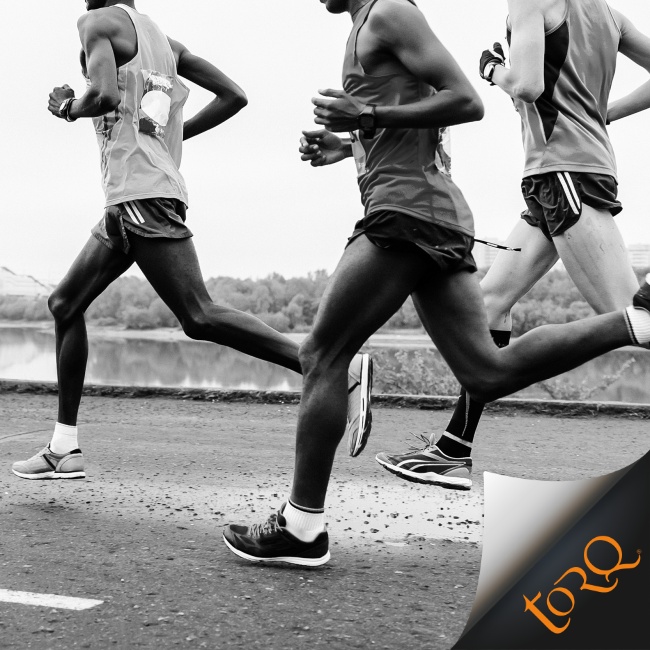
Beyond this there is also the obvious factor of motivation. The streets of Berlin were lined with 10’s of thousands of people cheering him, knowing he was on track to break a world record. With this degree of support, it’s hardly surprising that the power of psychology provided an exceptional turn of pace as the finish line approached. In an article from The Guardian he explains how the race, the conditions and the crowd were perfect, suggesting that psychology had a big impact on the race outcome.
The lesson here is that conclusions can be drawn without considering the bigger picture and the perfect laboratory protocol is designed to factor-out other interfering variables. As previously mentioned, this is particularly difficult with hydration research.
Maximising Hydration Pre, During & Post Exercise
Here are some hints and tips to help you to manage your hydration status:
Pre-Exercise: Checking the colour of your urine can be a highly valuable tool in determining your state of hydration pre-exercise. If your urine is dark in colour, it would suggest that you are dehydrated. If your urine is clear or has a very slight colour, this would suggest that you are well hydrated. Starting exercise in a dehydrated state will almost certainly lead to severe dehydration during exercise as we typically lose more water from sweat than we consume, especially in hot conditions and at higher exercise intensities. Guidelines set by the ACSM suggest checking the colour of your urine around 4 hours before exercise and you should aim to regularly sip 2-7ml/kg of a hypotonic carbohydrate solution such as TORQ Hydration Drink. For a 75kg person, this would be 375 – 525ml of drink. If you find during the first 2 hours that your urine colour is still dark (showing signs of dehydration) then you should consume another 3-5ml/kg (225 – 375ml for a 75kg person) in the 2 hours before exercise begins. Whilst this all sounds very mathematical, the reality of the values set by the ASCM suggests that if you are only slightly dehydrated pre-exercise, consume 1 bottle (500ml) of TORQ Hydration Drink pre-exercise and if you are showing signs of more severe dehydration, you should aim to consume 1.5 bottles (750ml) of TORQ Hydration Drink. Remember that you will hydrate faster with a dedicated hydration product and the electrolytes in the product will lead to desirable water retention within the cells of the body.
During Exercise: The intensity and duration of exercise as well as the environmental conditions should determine your hydration strategy. Shorter, more intense exercise sessions in the heat or indoors will result in the highest perspiration rates and for these sessions you should focus on using a hypotonic drink. Our advice is that you should use TORQ Hydration Drink for any exercise bouts of this nature that are up to an hour in duration. This is because a hypotonic drink of this nature will drive the maximum amount of fluid and electrolytes into the blood through the passive and facilitated transport mechanisms discussed earlier. As the exercise duration is no longer than an hour for these sessions, carbohydrate availability won’t be the limiting factor to performance and therefore the focus can be purely centred on optimal hydration.
On the other hand, if the duration of exercise is over an hour in duration, by default the intensity will be lower, reducing perspiration rates. Also, significantly, the longer the duration of the exercise, the greater the need for fuel (carbohydrate), so you should start to lean towards higher carbohydrate intakes. Again, by default, this will reduce the purity of the hydration campaign, because a hypotonic drink can’t be used alone – it doesn’t deliver sufficient fuel. The first change you will need to make to your hydration strategy is to introduce TORQ Energy Drink, because the isotonic formulation will deliver more fuel whilst at the same time performing strongly from a hydration perspective. The TORQ Fuelling System was developed to help our customers to get the balance right between fuelling and hydration and as the diagram below shows, in warmer conditions you should be primarily drinking your calories via TORQ Energy Drink and when perspiration rates are lower, you should maintain your fuel intake using more concentrated fuel sources like gels, bars, and chews. The key rule for optimal endurance performances is that your fuel intake should be constant (60-90g carbohydrate per hour or 2-3 TORQ Units), but your fluid intake should depend on your perspiration rates. 1 TORQ Unit per hour offers some fuelling benefits too, but is not within the optimal range.
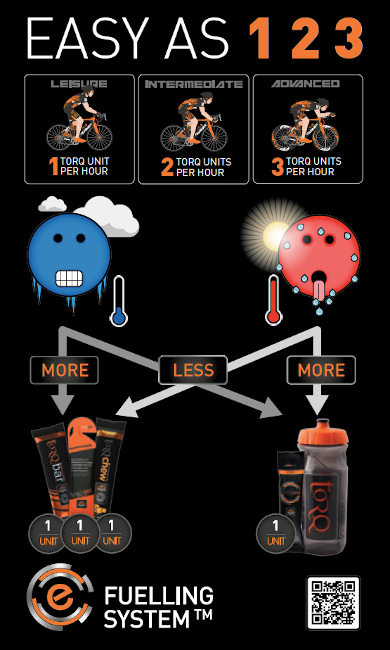
In terms of knowing how much fluid you should consume, drinking to offset the sensation of thirst is a good rule of thumb, although we always recommend drinking slightly ‘ahead of thirst’ to ensure that you stay on top of your hydration. This simple process of listening to your body should hold you in good stead, but you need to ensure that you are self-aware and in tune with your senses. Some people do set alarms on their watches/phones to prompt them to think about drinking, but we recommend that you bringing the process into your conscious mind so that it becomes automatic. In most normal situations, people should easily be able to easily tolerate 500ml to 1 litre of fluid intake per hour, but with practice and given the right circumstances, 1.5 litres or perhaps even 2 litres could be achievable. We have written about the benefits that can be achieved by training the gut in a previous article, so if you’re going off to compete in a very hot environment where high levels of fluid intake are going to be important, get some practice in before you go. It is possible to train your tolerance to higher fluid and fuel intakes.
Remember that the science supports higher fluid intakes with a hypotonic formulation, so there will need to be some compromise if you’re competing in an endurance event in the heat where both hydration and fuelling are equally important. It’s not unusual in these circumstances to fuel with 1.5 litres of TORQ Energy Drink per hour (delivering 90g carbohydrate per hour) and ignore entirely the concentrated products (gels, bars & chews). On the other hand, if perspiration rates are low, there really is no benefit to over-consuming fluids and therefore your body will easily handle a hypertonic regimen where fuel is prioritised over fluid delivery. Not every exercise session requires a huge hydration/drinking focus, it just needs to be sufficient to maintain a good state of bodily hydration.
If you’re interested in this area, we recommend that you take the time to read and watch the videos on our TORQ Fuelling System pages and also look in more detail at the TORQ Commandments interactive PDF, which clearly illustrates which TORQ products should be used for which types of exercise sessions.
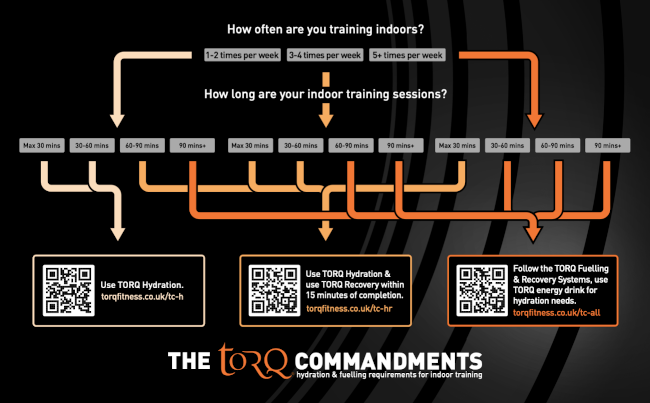
Post-Exercise: The amount of fluid required immediately after exercise depends on how high your perspiration rates were during exercise, how long you were exercising for and how effective and proactive your ‘during exercise’ hydration strategy was. All of these will determine your post-exercise hydration needs. It’s obvious that the first beverage you should reach for immediately post exercise is a recovery drink. TORQ Recovery Drink for instance has a formulation rich in carbohydrate, protein, key micronutrients and water to assist with the immediate replenishment of stored carbohydrate, support the rebuilding of muscle architecture and of course facilitate rehydration. Whilst the TORQ Recovery Drink provides a comprehensive and immediate opportunity to kickstart the process of rehydration, in some circumstances, when perspiration rates have been really high, there simply isn’t enough fluid volume in TORQ Recovery Drink alone to fully rehydrate the body back to its pre-exercise state.
In most cases, continuing to drink water alone along with tea, coffee and water-rich foods like fruit will rehydrate the body sufficiently over a reasonable timescale, so there’s no need to turn to dedicated performance products. There are some situations where a hypotonic drink like TORQ Hydration Drink could be useful however, if environmental conditions have been particularly harsh and the exercise particularly prolonged. The need for a dedicated performance product becomes more acute in stage races or training camps in the heat where the speed of rehydration becomes a critical factor.
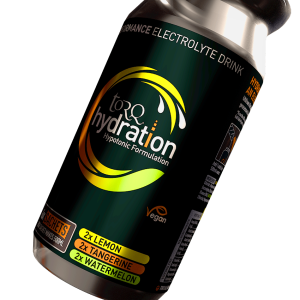
Summary
Dehydration impacts physiological function (the cardiovascular system and thermoregulatory capacity), which at some point will inevitably impact sports performance as our physiology is our ‘engine’ and a major component of athletic potential. Beyond that, as our physiological function is impacted, our perception of effort also increases, affecting our motivation and willingness to continue – a fundamental determinant of endurance sport success as well as achievement team/technical sports. It’s entirely plausible that research studies that show no change to performance with dehydration have had protocols that have simply not been long enough to induce levels of dehydration that we commonly see when supporting endurance competitors. As longer endurance efforts require fuelling as well as hydration, it is also clear that there’s a fine interplay to be considered. Hypotonic or isotonic carbohydrate intake provides fuel and facilitates the hydration process and at the same time, dehydration will impact the body’s ability to take on and process concentrated hypertonic carbohydrate fuel sources. With all things considered, for endurance athletes it is clear how vitally important it is that hydration is maintained at all times.
If you have any further questions about this article or any other on this website, please don’t hesitate in contacting us on 0344 332 0852 or by email on enquiries@torqfitness.co.uk
If you would like further information about TORQ’s products or would like to purchase any off the products discussed within this article, please click HERE.
References
Baker, L.B. and Jeukendrup, A.E., 2011. Optimal composition of fluid‐replacement beverages. Comprehensive Physiology, 4(2), pp.575-620.
Cheuvront, S.N., Kenefick, R.W., Montain, S.J. and Sawka, M.N., 2010. Mechanisms of aerobic performance impairment with heat stress and dehydration. Journal of applied physiology, 109(6), pp.1989-1995.
Loo, D.D., Zeuthen, T., Chandy, G. and Wright, E.M., 1996. Cotransport of water by the Na+/glucose cotransporter. Proceedings of the National Academy of Sciences, 93(23), pp.13367-13370.
Maughan, R.J. and Shirreffs, S.M., 2019. Muscle cramping during exercise: causes, solutions, and questions remaining. Sports Medicine, 49(2), pp.115-124.
Victor, A.C., Lawrence, E.A., Edward, F.C., Gary, W.M., Michael, N.S. and Leo, C.S., 1996. ACSM Position Stand: Exercise and Fluid Replacement. Medicine & Science in Sports & Exercise, 28(10), pp.i-ix.
Wall, B.A., Watson, G., Peiffer, J.J., Abbiss, C.R., Siegel, R. and Laursen, P.B., 2015. Current hydration guidelines are erroneous: dehydration does not impair exercise performance in the heat. British journal of sports medicine, 49(16), pp.1077-1083.
James, L.J., Funnell, M.P., James, R.M. and Mears, S.A., 2019. Does hypohydration really impair endurance performance? Methodological considerations for interpreting hydration research. Sports Medicine, 49(2), pp.103-114
Shi, X., & Passe, D. H. (2010), Water and solute absorption from carbohydrate-electrolyte solutions in the human proximal small intestine: a review and statistical analysis. Int J Sport Nutr Exerc Metab, 20(5), 427-42.
TORQ have worked nationwide with cycling, running and outdoor stores to create TORQ Accredited Performance Nutrition Centres.
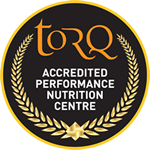
TORQ Assured
You can purchase TORQ with confidence. Many of our products have organic certification or are fairly traded. Please refer to product packaging for further details.

Newsletter
0


